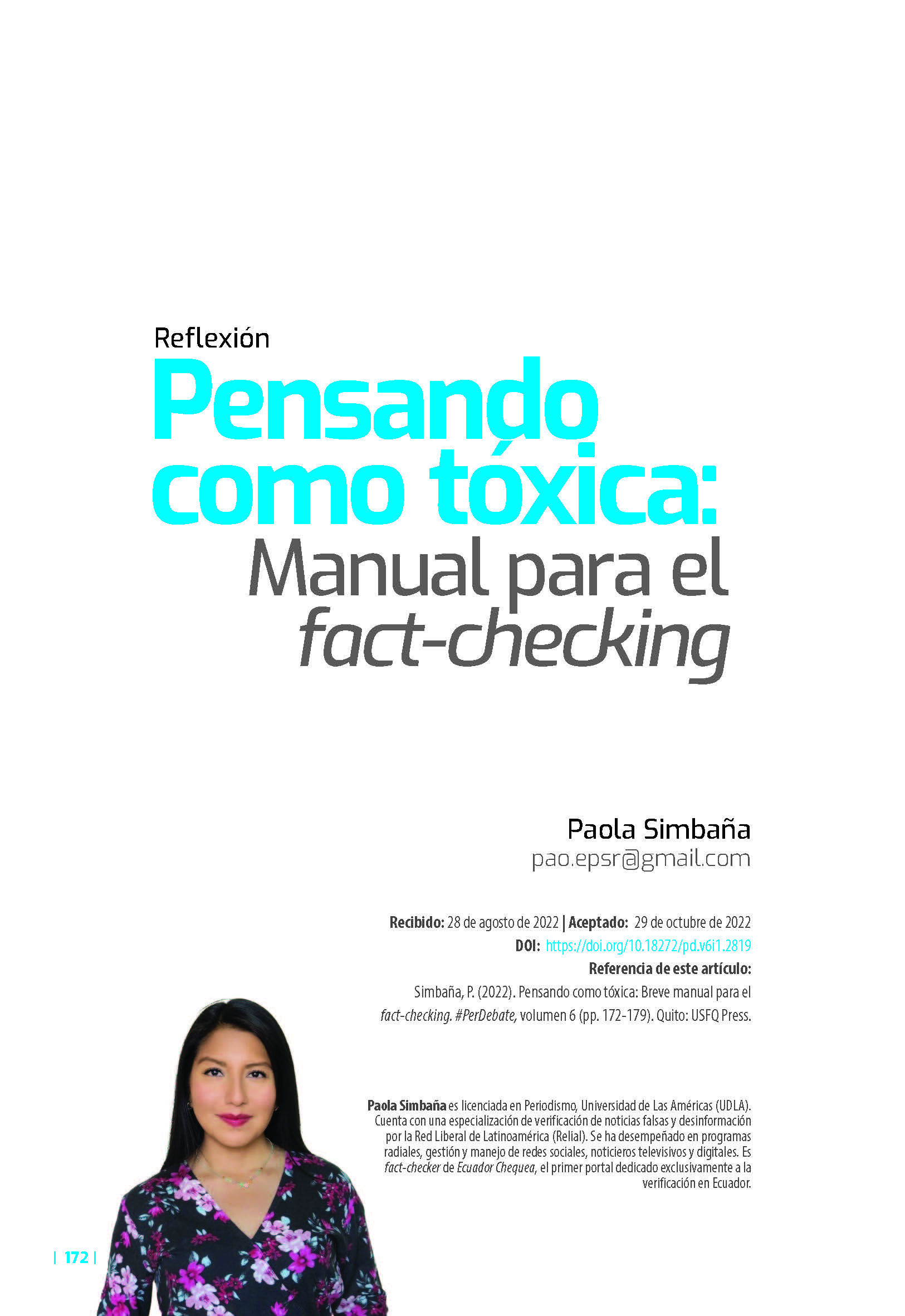Thinking as toxic: brief manual for fact-checking
Main Article Content
Abstract
Misinformation is a hoax. How can we avoid being another victim? Journalists cannot alone against so much disinformation, every digital user must do their part. The key is to submit each post —before sharing it— to the meticulous gaze of someone looking to hunt down an infidel. In this reflective text, some strategies are divided to verify the originality and transparency of information that circulates on the internet and/or social networks. Here is a guide to be toxic in that search and stop the virality of misinformation.
Article Details
References
Global Americans. (2021). Medición del impacto de la información falsa, la desinformación y la propaganda en América Latina: Identificación de fuentes, patrones y redes que propongan las campañas de desinformación extranjeras. Smart News & Research for Latin America’s Changemakers. https://bit.ly/3UHrlrv
Naciones Unidas. (2020, 16 de abril). Noticias falsas y desinformación, otra pandemia del coronavirus. Noticias ONU Mirada global Historias humanas. https://news.un.org/es/story/2020/04/1472922
Simbaña Ramos, P. (2022, 20 de julio). La desinformación también fue protagonista del paro. Ecuador Chequea. https://bit.ly/3LQHxm0


